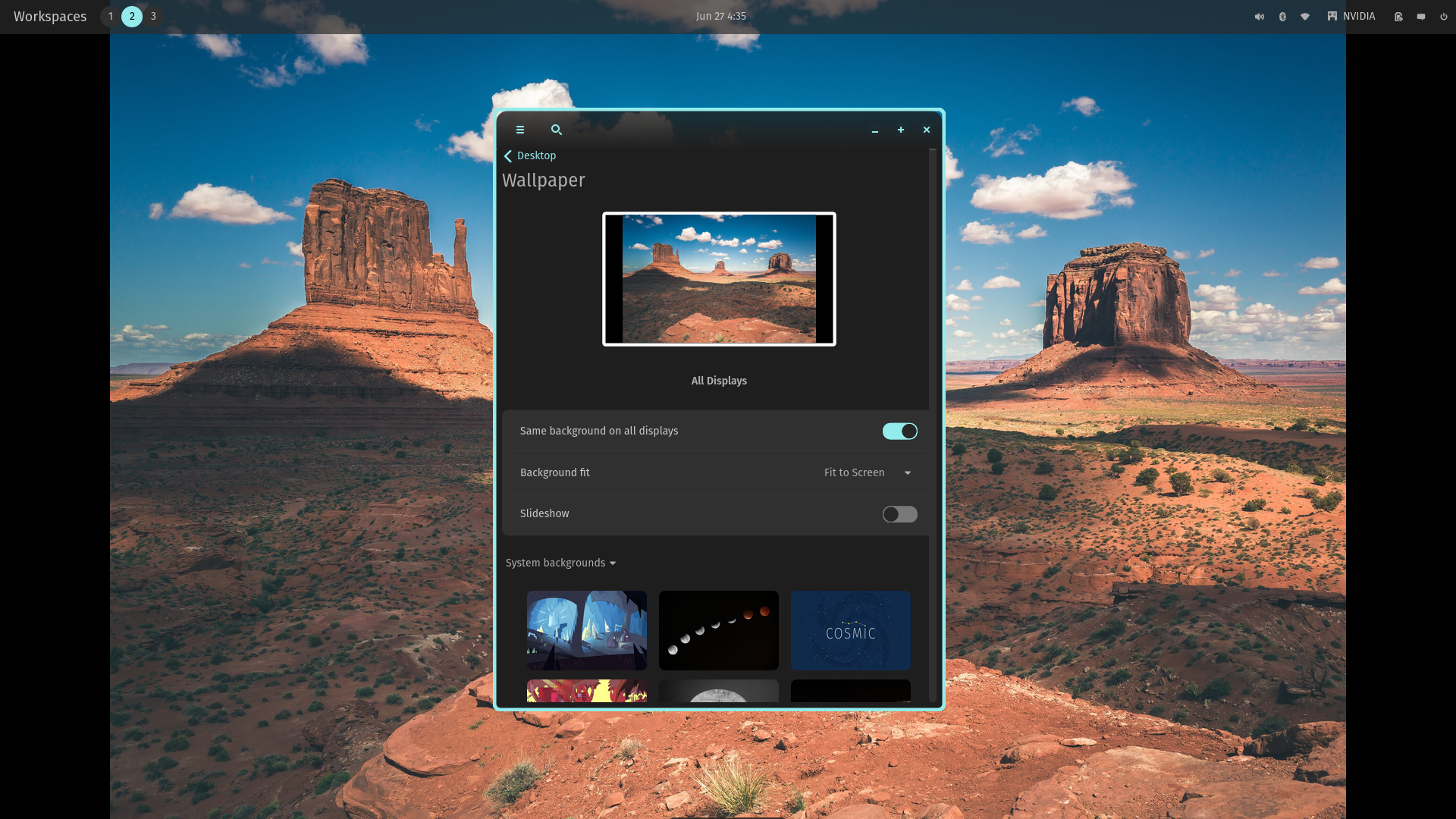Every application launches within 0.2 seconds for me. Maybe you need to play around with env WGPU_POWER_PREF=high
There will be configuration options eventually
How so? 22.04 is actively maintained and updated by Ubuntu, and is still the latest LTS release. On top of that, the most important packages in Pop!_OS are updated frequently, so we are on Mesa 24.0.3 and Linux 6.8.0. As for when COSMIC releases, you should read last month's blog post.
Did you not read the blog update? That is exactly what the blog update covered... The user's theme colors are applied to the Adwaita theme used by GTK4/libadwaita, and GTK3 theme support is provided by adw-gtk3.
All desktops use the Super key nowadays. Sway, i3, GNOME, Plasma, etc. are all using the Super key. Have been for years. The standard convention is that the Super key is reserved for system-level shortcuts handled by the window manager; and Alt key shortcuts are reserved for application-level shortcuts. Your desktop might have bound both Alt and Super because of legacy reasons.
You might be surprised how much disk space those GNOME Circle applications actually require, despite being dynamically linked to a lot of GTK/GNOME libraries. Unless they're written in a scripting language, they're much closer to a COSMIC application than you think.
- https://flathub.org/apps/org.gnome.TwentyFortyEight 12 MB
- https://flathub.org/apps/org.gnome.Reversi 12 MB
- https://flathub.org/apps/org.gnome.NetworkDisplays 13 MB
- https://flathub.org/apps/org.gnome.eog 12 MB
- https://flathub.org/apps/org.gnome.Photos 29 MB
- https://flathub.org/apps/org.gnome.Notes 12 MB
- https://flathub.org/apps/org.gnome.gedit 20 MB
- https://flathub.org/apps/app.drey.Warp 22 MB
- https://flathub.org/apps/com.github.flxzt.rnote 41 MB
- https://flathub.org/apps/io.gitlab.news_flash.NewsFlash 42 MB
I don't see the issue with an application having a static binary within the realm of 15-25 MB. Even if you had 100 applications installed, that's only 2 GB of disk usage.
That is to show the icon theme feature.
I wouldn't rule out the possibility of a cosmic-applets-community package which bundles third party applets, or the gradual inclusion of popular applets into cosmic-applets. Given that an applet would only become popular if there's a lot of need for those use cases, then it would make sense to open a path to getting them mainlined.
This video is very outdated by 3 months. Although I'm not sure if COSMIC has been on The Linux Experiment since then.
Not yet, but PRs welcome if anyone has experience with theming Qt.



If COSMIC is pathetic, then GNOME must be abysmally unusable. COSMIC was already planned long before there was any beef with GNOME. We listen to user feedback and prioritize development of features that our developers and users want. Good luck trying to replicate COSMIC's theming and tiling capabilities in GNOME. Let alone the overall stability and performance of COSMIC. COSMIC Store is the fastest app store on Linux now. I'd recommend everyone to try it out.
sudo apt install cosmic-store